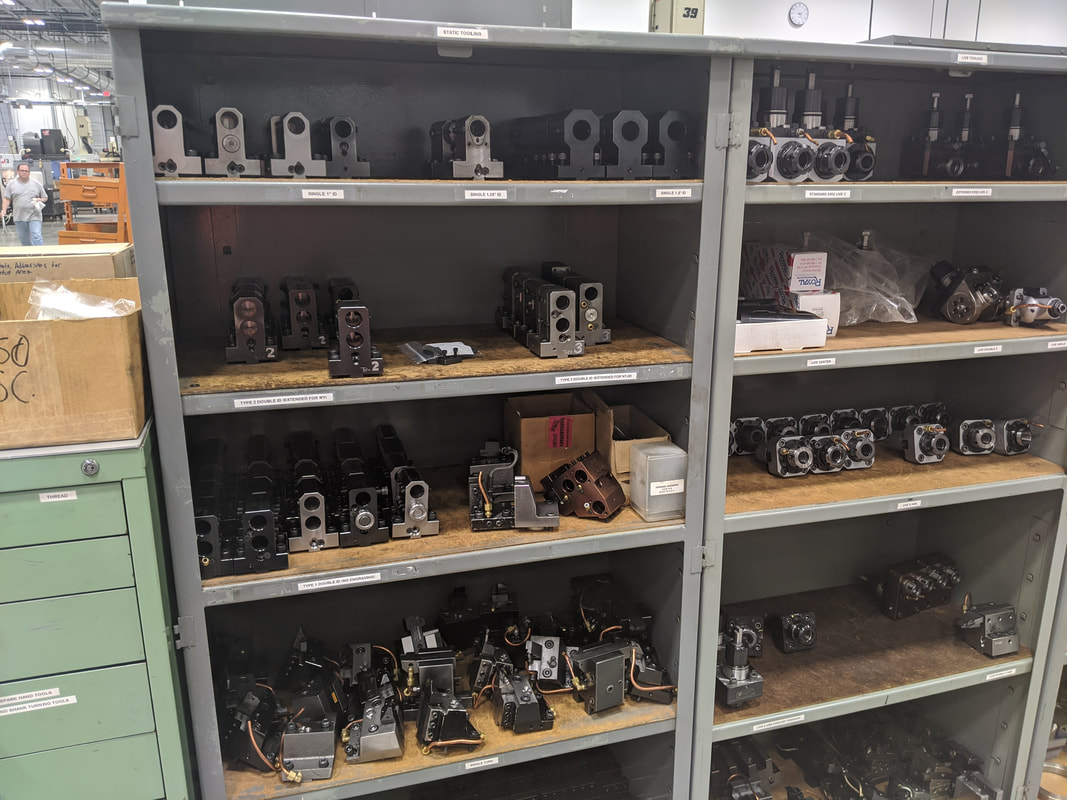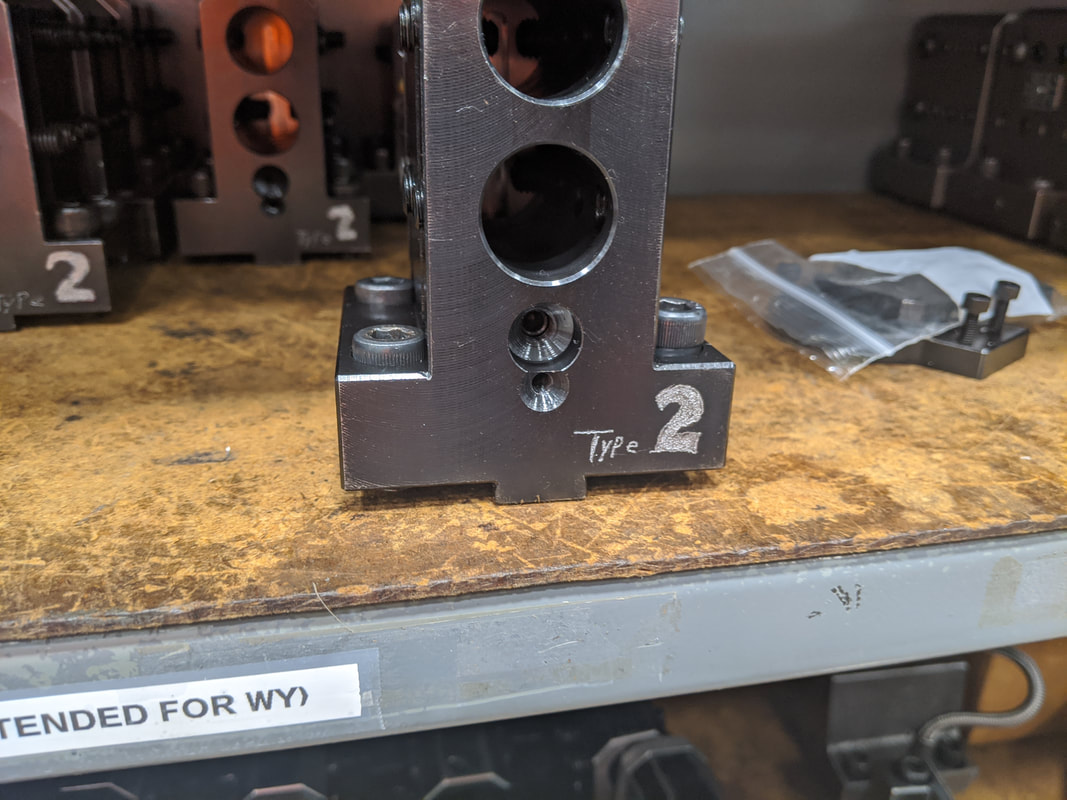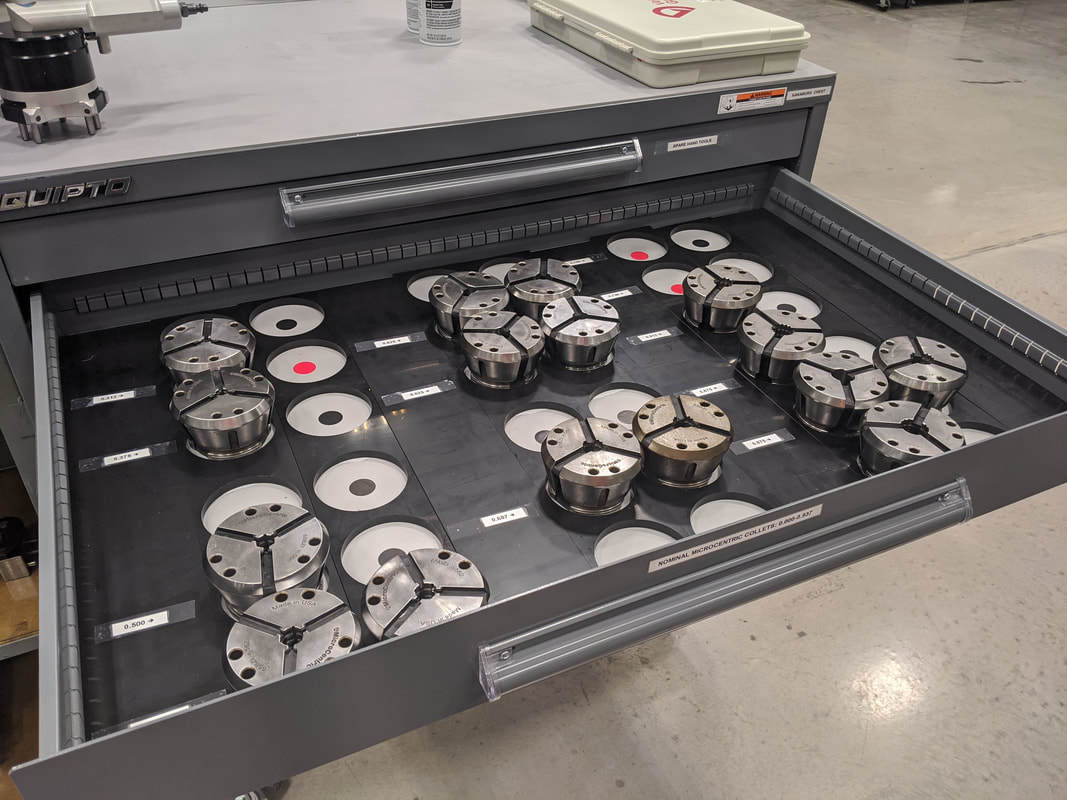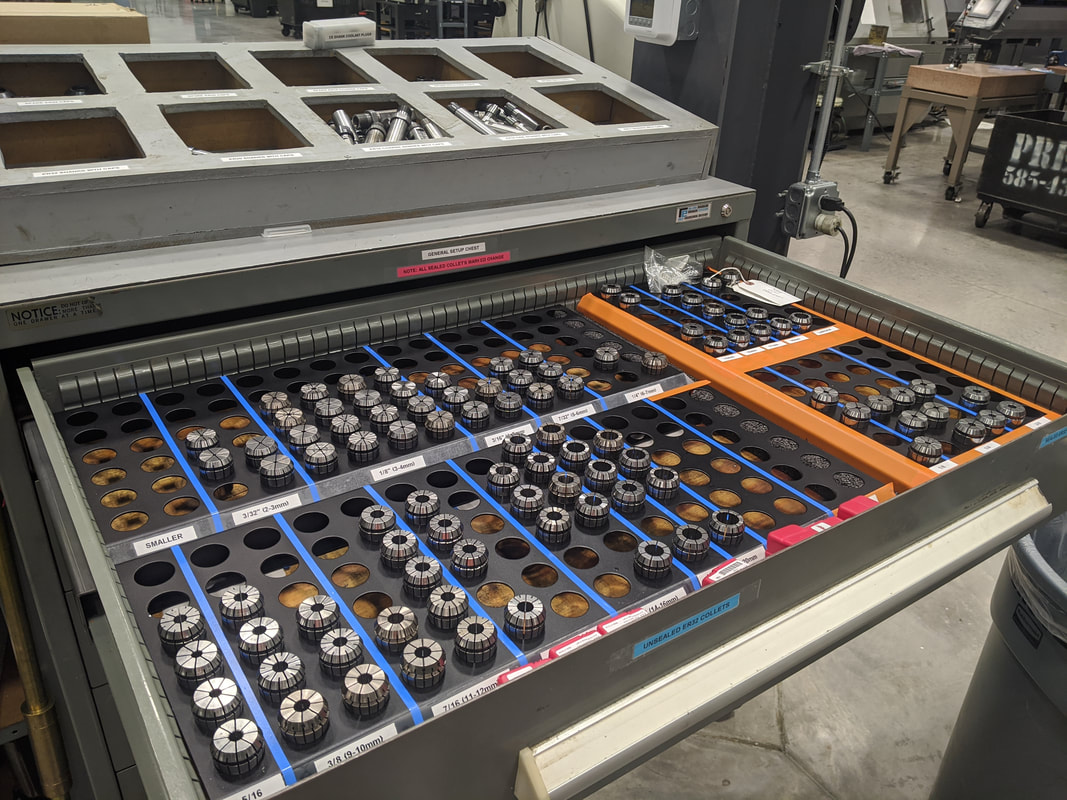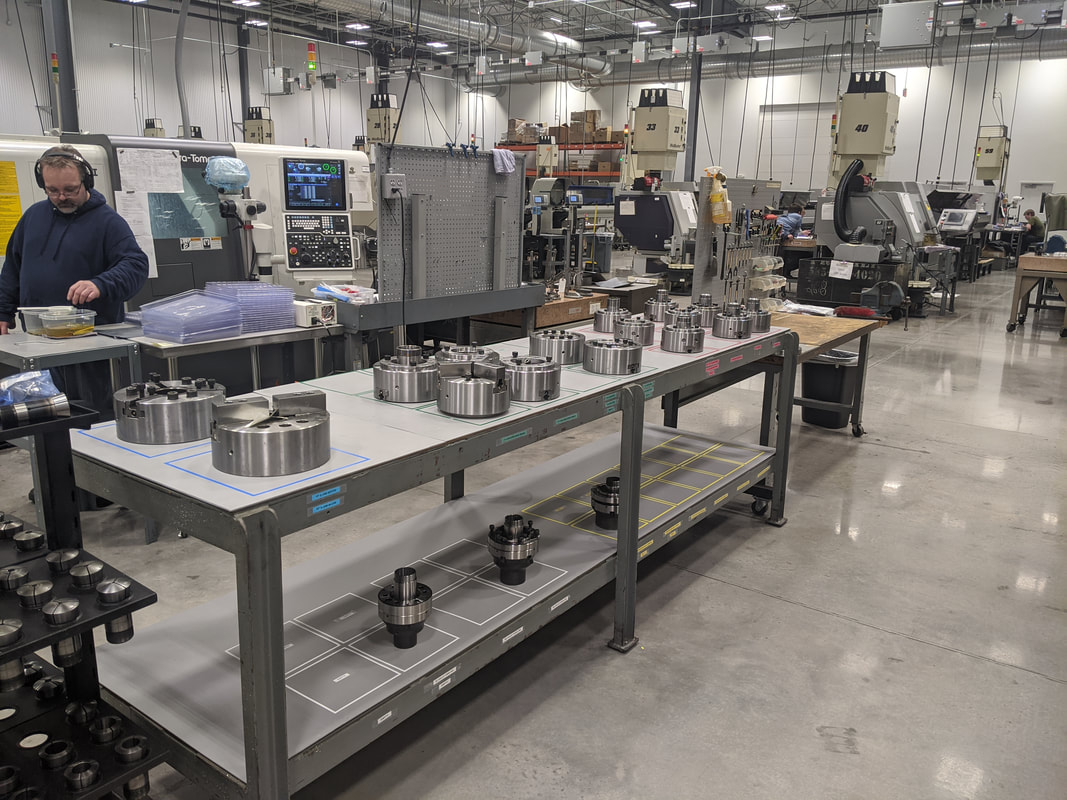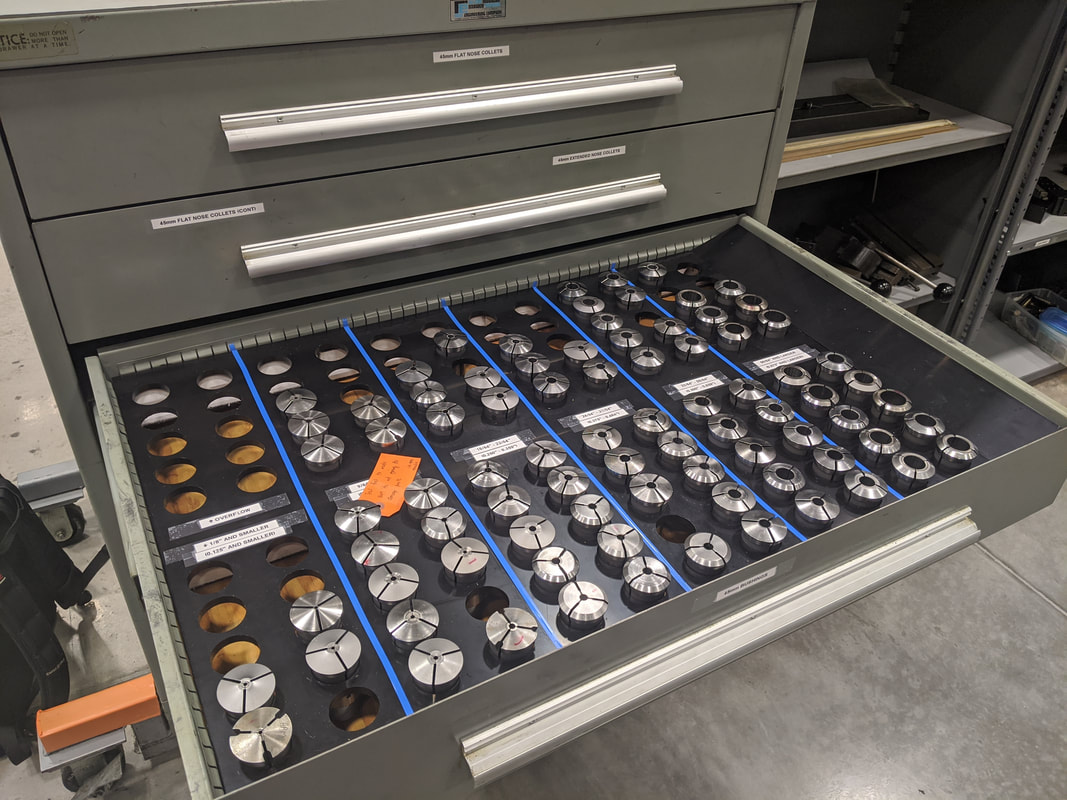SummaryDuring my internship with Addison Precision Manufacturing, my longest project was developing and implementing a new way to store and organize tools, tool posts, workholding, etc. in the setup area.
Unfortunately, due to the nature of the parts manufactured by APM, I have few pictures of this project.
|
IdentificationMany of the machine parts kept in the setup area varied only slightly from each other, such as collets that incremented 1/64", or tool posts with slightly different keyways.
For small or precision items such as collets and bushing, the items were divided into categories which could then be used to help locate items faster. In the example of collets, the hundreds of collets the company owns used to just be in a single drawer, with no rhyme or reason to their positioning.
For larger items like tool posts, labels were engraved or applied directly. In the example of the tool post to the right, "Type 2" tool posts were visually identical to "Type 1" and "Type 3" but would not all fit the same machines.
|
By giving these similar parts identifiers, a descriptor was able to be included on the setup sheet so that machinists did not have to waste time trying multiple posts to find the correct one for their machine.
AvailabilityBefore my project, manufacturing engineers at APM did not know how many of certain tools or workholdings the company had. If too many jobs were scheduled at once requiring the same Microcentric Collet, for instance, a new one would have to be rush ordered, or one of the production runs delayed.
To solve this, many of the high-demand, high-cost items such as large collets and chucks were given a specific spot in storage. Then, manufacturing engineers could determine how many of these items were on the floor in use by checking how many empty spots for that specific item there were.
|
Versatility and ExpansionAPM has been rapidly growing in the past decade, and that trend showed no sign of slowing down. Rather than having a system that required constant redesign to accommodate growth, this system was developed with this growth in mind, through expansion space and versatile design.
Based on the opinions of the company's manufacturing engineers and where they saw the most upcoming growth in the company, additional unused space was interspersed throughout the different sections. No section was designed to be more than 70% full when at full use, to allow for more items to be directly dropped in without having to move drawers or re-label everything downstream.
|
When this buffer is eventually overwhelmed, every organizational tool is designed to be temporary and easy to move. Labels were attached with re-usable tape to allow movement, divisions between object types were made with tape or chalk lines so that they can be moved, and standard sized spacing plates were used for organizing drawers. In many of the drawers below, the black plastic that is holding everything in place is shop-made UHMW plates, fashioned from a large supply of blanks. If, for example, a new drawer for Citizen Bushings was needed, it would take only 1.5 hours for the tool room in house to fashion and install the required plates. All machining was kept simple, using a single common tool and conversational ProtoTrak programming. The designs for any variation of plate can be recalled and run without an operator.
ER Collet SortingNewer machinists have mixed up sealed and unsealed ER collets in the past, as well as the size class of collet. To alleviate these issues, a 2-level color coding system was implemented. Each size collet had a unique color that can be matched from the setup sheet, to the tool shank, to the collet drawer and labels. Then, the sealed collets were followed by a bright orange indicator, that was also visible within each drawer. This ensured that machinists knew which collet they were grabbing and if it was correct to their sheet.
Collets were sorted into close size ranges, incrementing 1/16" to allow some expansion or the use of an off-nominal collet if the setup allows.
|
Chuck StorageAPM was primarily a turning shop, so it had a large number of chucks. Originally these were stored in a less-traveled area of the floor, making specific ones hard to identify and causing unnecessary ergonomic stress on machinists.
Chucks were each given a unique storage location, grouped by size and type, with their identifying marks and bolt patterns facing up. Heavier or harder to move chucks were placed on the top shelf of a storage rack, that was only slightly higher than setup carts and work benches to allow for easy transfer.
|
Collet and Bushing StorageThe swiss turn machines at APM required very accurate bushing and collet sets to ensure the proper flow of material during auto-loading. There was originally no sorting or storage mechanism for these items, meaning that every time a machinist opened the drawer to find one, they'd slide around and collide.
All of the collets and bushings were cataloged and divided into size ranges. These ranges were then applied to UHMW plastic separators that ensured the collets and bushings did not collide, no matter how aggressively the drawer was opened. To protect the delicate threads at the base of these parts, a foam pad was placed underneath each occupied spot.
|
